With the popularity of cloud computing, cloud caching, as an important technical means, has also been favored by more and more enterprises. Among many cloud cache providers, Google Cloud Memorystore, part of Google Cloud Platform (GCP), is a powerful and easy-to-use cloud cache product. This article will introduce you to Google Cloud Memorystore caching technology, help you better understand the concepts, principles, advantages and applicable scenarios of cloud caching, as well as how to create and use Google Cloud Memorystore instances on GCP.
What is Cloud Cache
Cloud Cache (Cloud Cache) is a distributed cache service based on cloud computing, which can quickly create, use, manage and expand cache in a cloud environment. system. Cloud cache is mainly used to reduce database load, accelerate application response time, improve data access performance and data reliability, thereby enhancing application scalability and reliability. Compared with traditional stand-alone cache, cloud cache has higher availability, better performance, higher capacity and lower cost.
There are many types of cloud cache, including distributed cache, in-memory database, key-value storage, message queue, etc. Among them, distributed cache is the most common and widely used type. Distributed cache distributes data on multiple servers and uses hash algorithms and routing protocols to achieve data sharding, storage, access and management. The main advantages of distributed cache are high availability, high concurrency and low latency, which is suitable for processing data application scenarios with high concurrency and large access volume.
The principle of Google Cloud Memorystore cache technology
Google Cloud Memorystore cache technology is a cloud cache service based on Redis and Memcached, which is widely used in Web, mobile applications, games, Internet of Things and other fields . The principle of Google Cloud Memorystore caching technology is to use memory storage technology to store data in memory to improve data access speed and response time. At the same time, Google Cloud Memorystore caching technology also uses hash algorithms and routing protocols to distribute data across multiple nodes to enhance data availability and reliability.
Google Cloud Memorystore caching technology supports multiple data types, including strings, lists, hash tables, sets, and sorted sets. When data is written to the cache, Google Cloud Memorystore caching technology also supports setting expiration times and automatic cleanup mechanisms to improve data management and control. Google Cloud Memorystore caching technology also supports a variety of data access interfaces, including Redis's standard protocol and Memcached's binary protocol, to facilitate users' integration and rapid development with Google Cloud Memorystore caching technology.
Advantages of Google Cloud Memorystore cache technology
Compared with traditional stand-alone cache, Google Cloud Memorystore cache technology has the following advantages:
- High availability: Google Cloud Memorystore caching technology adopts technologies such as master-slave replication and failover to ensure high availability and durability of data.
- High performance: Google Cloud Memorystore caching technology uses memory storage technology to improve data access speed and response time. At the same time, Google Cloud Memorystore caching technology also supports functions such as data preheating, data compression, and data encryption to further improve performance.
- High scalability: Google Cloud Memorystore cache technology supports simple and easy-to-use horizontal expansion methods, which can dynamically expand the cluster size according to business needs to adapt to the growing data storage needs.
- Low cost: The cost of using Google Cloud Memorystore caching technology is relatively low because it can effectively reduce the database load and improve data access performance, thereby reducing the scale and cost of the database server.
Applicable scenarios for Google Cloud Memorystore caching technology
Google Cloud Memorystore caching technology is suitable for the following scenarios:
- Web applications and mobile applications Session storage and page caching;
- Data caching and message queues in gaming and media applications;
- Sensor data caching and event triggers in IoT applications;
- Product information caching and order status caching in e-commerce applications;
- Data caching and transaction history in financial and insurance applications.
How to create and use a Google Cloud Memorystore instance on GCP
Creating and using a Google Cloud Memorystore instance on GCP is very simple. Here are the basic steps to create and use a Google Cloud Memorystore instance:
- Log in to the GCP management console and select the Memorystore service.
- Click the "Create Instance" button and fill in the instance name, cache type, number of nodes, node specifications and other information.
- Click the "Create" button and wait for the instance creation to complete.
- Use the standard Redis or Memcached protocol in the application to connect to the Google Cloud Memorystore instance and read, write and manage data.
Summarize
Google Cloud Memorystore caching technology is a cloud caching service based on Redis and Memcached. It has the advantages of high availability, high performance, high scalability and low cost, and is suitable for a variety of data application scenarios. Creating and using Google Cloud Memorystore instances on GCP is very simple. Using standard Redis or Memcached protocols to connect to Google Cloud Memorystore instances in your application can quickly gain efficient data access and management capabilities.
The above is the detailed content of Learn about Google Cloud Memorystore caching technology. For more information, please follow other related articles on the PHP Chinese website!
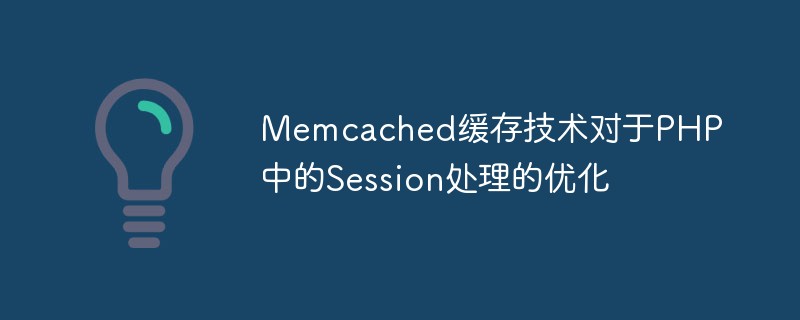 Memcached缓存技术对于PHP中的Session处理的优化May 16, 2023 am 08:41 AM
Memcached缓存技术对于PHP中的Session处理的优化May 16, 2023 am 08:41 AMMemcached是一种常用的缓存技术,它可以使Web应用程序的性能得到很大的提升。在PHP中,常用的Session处理方式是将Session文件存放在服务器的硬盘上。但是,这种方式并不是最优的,因为服务器的硬盘会成为性能瓶颈之一。而使用Memcached缓存技术可以对PHP中的Session处理进行优化,提高Web应用程序的性能。PHP中的Session处
 利用Memcached缓存技术对于PHP中的音视频播放进行优化May 17, 2023 pm 04:01 PM
利用Memcached缓存技术对于PHP中的音视频播放进行优化May 17, 2023 pm 04:01 PM随着互联网技术的不断发展,音视频资源已经成为了互联网上非常重要的一种内容形式,而PHP作为网络开发中使用最广泛的语言之一,也在不断地应用于视频和音频播放领域。然而,随着音视频网站的用户日益增加,许多网站已经发现了一个问题:在高并发的情况下,PHP对于音视频的处理速度明显变缓,会导致无法及时播放或者播放卡顿等问题。为了解决这个问题,Memcached缓存技术应
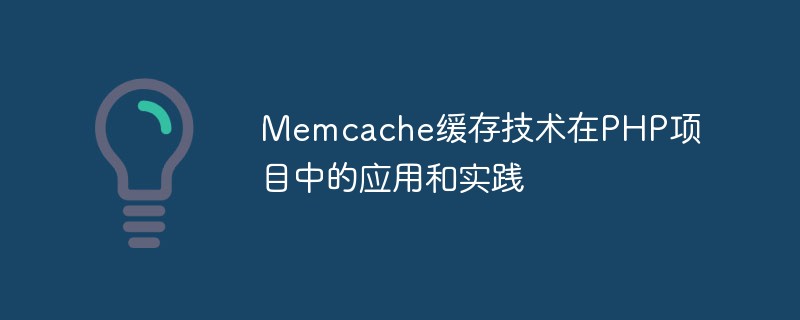 Memcache缓存技术在PHP项目中的应用和实践May 17, 2023 pm 02:10 PM
Memcache缓存技术在PHP项目中的应用和实践May 17, 2023 pm 02:10 PMMemcache是一种开源的、分布式的缓存技术。它通过将数据存储在内存中,极大地提高了数据的访问速度,从而提升了网站的性能和响应速度。在PHP项目中,Memcache缓存技术也被广泛应用,并且取得了很好的效果。本篇文章将深入探讨Memcache缓存技术在PHP项目中的应用和实践。一、Memcache的原理和优势Memcache是一种内存缓存技术,它可以将数据
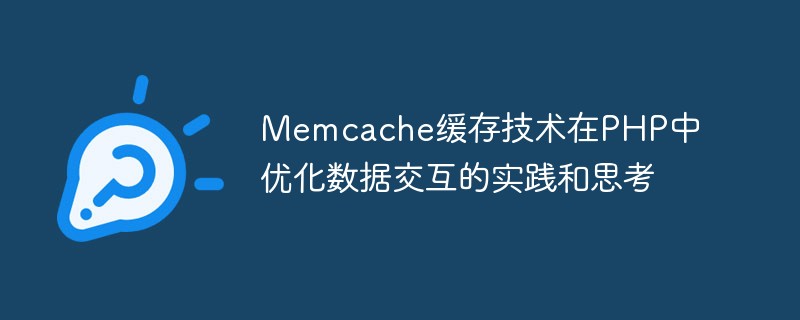 Memcache缓存技术在PHP中优化数据交互的实践和思考May 17, 2023 pm 09:51 PM
Memcache缓存技术在PHP中优化数据交互的实践和思考May 17, 2023 pm 09:51 PMMemcache缓存技术在PHP中优化数据交互的实践和思考在现代的Web应用中,数据交互是一个非常重要的问题,它没有足够的高效性,将会限制Web应用程序的扩展性和性能。为了加快数据交互速度,我们通常的做法是优化数据库的设计、提高硬件的性能和增加服务器容量。但是,这些方法都有一个共同的限制:它们会增加系统的成本。最近几年,Memcache技术在解决这个问题上提
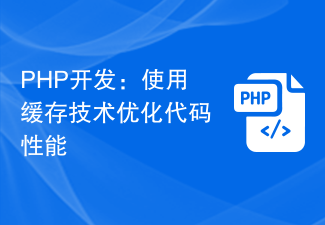 PHP开发:使用缓存技术优化代码性能Jun 15, 2023 pm 02:39 PM
PHP开发:使用缓存技术优化代码性能Jun 15, 2023 pm 02:39 PMPHP是一种脚本语言,常用于Web应用程序开发。随着互联网的迅速发展,Web应用程序的开发也变得越来越复杂,代码量越来越大。因此,优化代码性能变得尤为重要,在这方面,使用缓存技术是一种行之有效的方式。在本文中,我们将探讨PHP开发中使用缓存技术优化代码性能的方法和技巧。什么是缓存技术?首先,让我们了解一下什么是缓存技术。在计算机中,缓存是一种临时存储数据的技
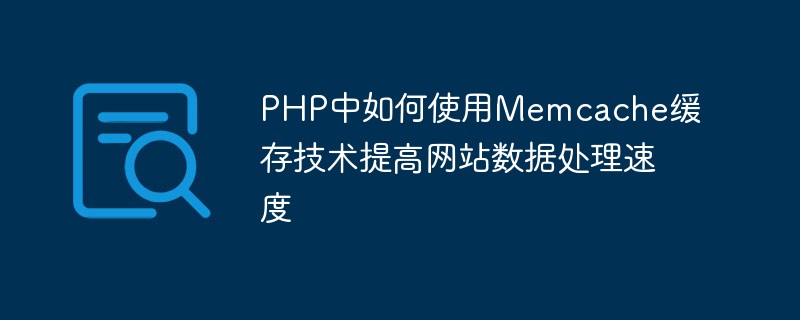 PHP中如何使用Memcache缓存技术提高网站数据处理速度May 15, 2023 pm 10:21 PM
PHP中如何使用Memcache缓存技术提高网站数据处理速度May 15, 2023 pm 10:21 PM随着互联网用户数量的快速增长,网站数据处理速度愈发成为了一个核心问题。Memcache以其高性能和低延迟的优点成为了网站缓存技术中的佼佼者。今天本文就会带你一步一步了解PHP中如何使用Memcache缓存技术来提高网站数据处理速度。Memcache基础知识Memcache是一个高性能的分布式内存对象缓存系统。它可以减少数据库在处理高并发访问时的压力,提高网站
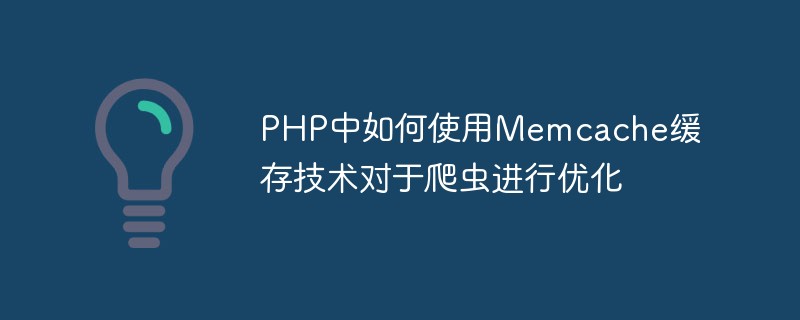 PHP中如何使用Memcache缓存技术对于爬虫进行优化May 16, 2023 pm 02:21 PM
PHP中如何使用Memcache缓存技术对于爬虫进行优化May 16, 2023 pm 02:21 PM随着互联网技术的发展,网络爬虫越来越被用于数据挖掘、搜索引擎等领域。而大规模的数据采集和处理不仅需要更高效的爬虫算法,同时需要优化处理数据的速度和减少资源消耗。在这个过程中,缓存技术发挥了重要作用,为数据处理和应用的性能提供了帮助。本文介绍如何使用PHP中的Memcache缓存技术对于爬虫进行优化。Memcache是一个高性能的分布式内存对象缓存系统。Mem
 如何使用PHP中的Memcache缓存技术提高网站的大并发性能May 17, 2023 pm 05:00 PM
如何使用PHP中的Memcache缓存技术提高网站的大并发性能May 17, 2023 pm 05:00 PM随着互联网技术的不断发展,网站的用户访问量越来越大,带来的并发访问量也越来越高。为了应对这种高并发访问,常用的手段是使用缓存技术。而在PHP语言中,Memcache缓存技术是一种非常有效的解决方案。Memcache是一种分布式缓存系统,能够将大量的数据缓存在内存中,并能够从内存中快速读取,从而提高网站的响应速度和并发能力。在本文中,我们将介绍如何使用PHP中


Hot AI Tools

Undresser.AI Undress
AI-powered app for creating realistic nude photos

AI Clothes Remover
Online AI tool for removing clothes from photos.

Undress AI Tool
Undress images for free

Clothoff.io
AI clothes remover

AI Hentai Generator
Generate AI Hentai for free.

Hot Article

Hot Tools

EditPlus Chinese cracked version
Small size, syntax highlighting, does not support code prompt function

Safe Exam Browser
Safe Exam Browser is a secure browser environment for taking online exams securely. This software turns any computer into a secure workstation. It controls access to any utility and prevents students from using unauthorized resources.

mPDF
mPDF is a PHP library that can generate PDF files from UTF-8 encoded HTML. The original author, Ian Back, wrote mPDF to output PDF files "on the fly" from his website and handle different languages. It is slower than original scripts like HTML2FPDF and produces larger files when using Unicode fonts, but supports CSS styles etc. and has a lot of enhancements. Supports almost all languages, including RTL (Arabic and Hebrew) and CJK (Chinese, Japanese and Korean). Supports nested block-level elements (such as P, DIV),

SublimeText3 Mac version
God-level code editing software (SublimeText3)

MantisBT
Mantis is an easy-to-deploy web-based defect tracking tool designed to aid in product defect tracking. It requires PHP, MySQL and a web server. Check out our demo and hosting services.





